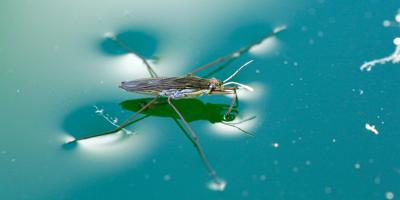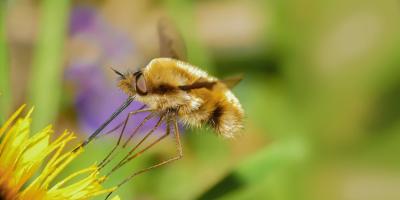Imported Insects as Exotic Pets: Yay or Nay?

If you’ve been thinking about following your dream to become a world-famous Instagram influencer, one of the most direct paths to superstardom these days seems to be showcasing exotic pets. All sorts of (literally) wild species are filling phone screens everywhere, as influencers show off their unusual animal acquisitions, from hedgehogs to tropical birds and beyond.
The trouble is that most exotic pets are considered “exotic” for a reason: They’re usually tricky to find, expensive to purchase and difficult to properly care for. However, certain varieties have proven to be exceptions to these general rules, and still carry the same #Instaworthy appeal that are sure to impress your critter-loving fans and grow your “follower” count with little financial investment.
Here are some pet ideas that you should consider:
Madagascar Hissing Cockroach
Cockroaches as pets?
You bet—especially on Instagram, where everyone’s looking for something that helps them stand out from the crowd. Believe it or not, Madagascar hissing cockroach owners say the insects are quite docile and easy to handle. Hissers are native to—you guessed it—the tropical island of Madagascar, off the southeastern coast of mainland Africa. They hiss by exhaling quickly through a pair of breathing tubes to attract mates, as well as when they feel threatened and when they’re preparing to attack. But don’t worry, whether you bring one or a dozen home, you’ll be safe. They don’t bite humans.
Bonus: You won’t even need to buy them special food, as their diet consists of fresh produce and dog food. This is especially important to note, as their relatively-clean diet and habits mean that they pose no health risk to humans, especially when paired with the fact that they won’t live long outside of their cage (meaning you won’t accidentally become infested with the loose offspring of your once-beloved pets).
Tarantulas
Fear of spiders is ingrained in many people, so why would anyone want to keep an extra-large version as a pet? If you’re a rising Instagram star, the answer is simple—they get likes! Tarantulas come from a hearty species that’s easy to care for. They don’t require a lot of space, and are relatively inexpensive to feed and care for.
Additionally, while it can vary species-to-species, some varieties have a calm, docile disposition and rarely (although it’s not unheard of) bite humans. If they do, it feels about as bad as a bee sting, but it’s not dangerous. Tarantula venom is weak and won’t affect humans beyond a potential allergic reaction, and it’s important to note that bites can be very easily avoided altogether as long as you are properly caring for your tarantula and not handling it unnecessarily.
African Giant Millipedes
Another insect that comes to the United States by way of Africa, these giant millipedes do not make good pets if you’re squeamish around bugs. However, if you can stomach the squirmy, many-legged creatures, they’re actually quite calm and slow-moving.
But be forewarned—they reproduce very quickly, so unless you were looking to intentionally breed them, make sure to avoid placing a male and female together in a terrarium... otherwise it’ll be full of baby millipedes in no time. If you’re looking for a long-term companion that doesn’t have any potential to sting or bite, African giant millipedes fit the bill, with an average lifespan of around seven to ten years. They’re also gentle enough to be safely handled by young children (with adult supervision).
Emperor Scorpions
Now here’s a pet you won’t want to, well, pet.
Emperor scorpions, with their menacing claws and even more threatening tail stinger, are actually quite docile, but you’d still do well to keep your mitts off of them. While they rarely sting or pinch, if they do, medical attention usually isn’t required, unless the victim has an anaphylactic reaction (which is also rare). However, if you’re shooting for Instagram glory, few exotic pets catch as much attention (or as many of those all-important likes) as Emperor scorpions. As far as care goes, they’re notably quiet, clean and easy to care for. Plus, their daily eating ritual can make for a great IG story series, as they prefer hunting live prey, such as crickets and moths.
Halloween Moon Crabs
No, they’re not from another planet, but that doesn’t mean Halloween moon crabs don’t seem a little out of this world. With multi-colored bodies that fade from dark purple into bright red and yellow, Halloween moon crabs get their name from their resemblance to jack-o-lanterns. They also require the most care and maintenance out of all the creatures on this list, including a specially-constructed terrarium that gives them a place to burrow, but they may be well worth it: Halloween moon crabs live about eight to ten years, so they’ll be around for many trick-or-treat nights to come.
Thanks to the Internet and lightning-speed shipping, it’s become easier than ever to legally obtain exotic pets such as these. But remember—just because the species here are safe to keep as pets, not all similar species are. Most cockroaches, for example, would make unwelcome housemates, some spiders and scorpions are deadly, millipedes are related to silverfish and all sorts of other invasive pests, and crabs... well, some crabs are just better enjoyed on a dinner plate.
Do you have an imported insect for an exotic pet? Send us a pic or tag us in the post, and we might just share it on our own Instagram page. Follow us for all sorts of fun bug facts and seasonal updates!



